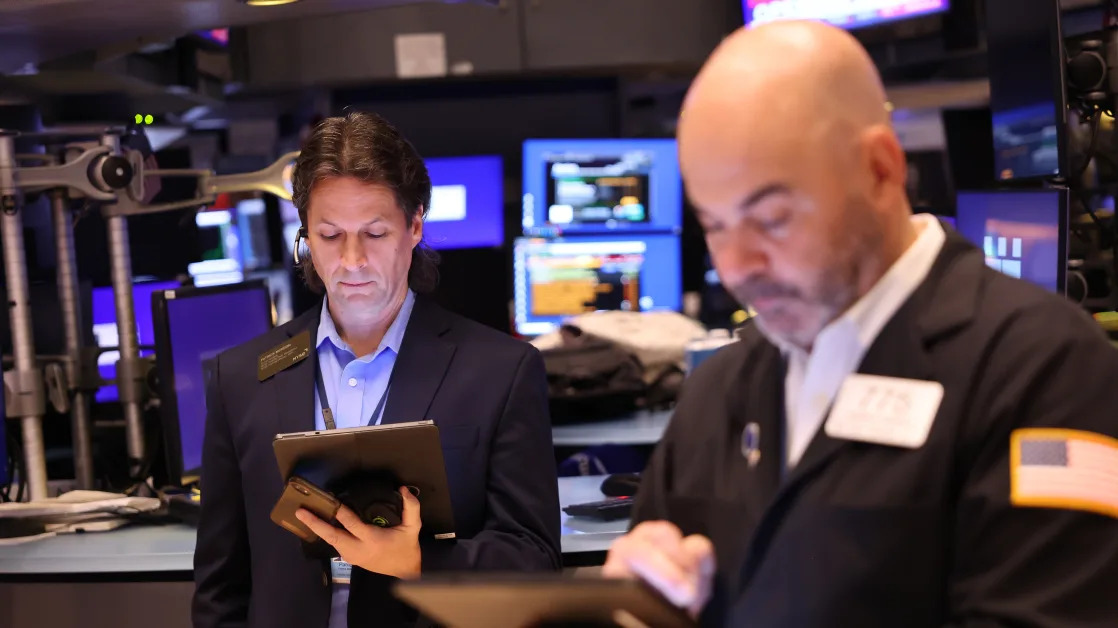(Bloomberg) -- The tech world’s obsession with artificial intelligence is continuing to spur a huge demand for power — supercharging returns in the utilities sector and shaking up the S&P 500 index. Wall Street sees more to come.
While utilities have been market leaders all year thanks to AI, shares in independent power producers Vistra Corp. and Constellation Energy Corp. have really taken off in the past month, helped by a landmark deal for Constellation to supply nuclear power to Microsoft Corp. Vistra — a top pick of Third Point LLC’s Daniel Loeb because of its AI-related potential — is the top S&P 500 performer year-to-date, with a more than 220% gain eclipsing Nvidia Corp.’s 165% rally.
Constellation is in fourth place, with a jump of about 130%, while power company NRG Energy Inc. and electrical equipment maker GE Vernova Inc. are also in the leaderboard’s top ten. Last year, the top spots were dominated by chip and server makers, as well as AI trades like Meta Platforms Inc.
“What was introduced to utilities is this growth component and that is AI and the need for electricity and, more importantly, the potential for pretty substantial electricity growth,” said Rob Thummel, managing director and portfolio manager at Tortoise Capital Advisors LLC. That’s “gotten investors excited as they look for cheaper ways to invest in AI and not have to buy more expensive technology stocks.”
The gains have come as investors grow more cautious about the original AI winners, questioning how long it will take for big technology firms’ heavy spending on AI to pay off. As in previous rushes, purveyors of the tools that power the frenzy — like Nvidia — are among the most obvious early winners. But no matter which companies end up using the chips or developing the best AI software, they’ll all need more power.
Investors have been taking notice, pushing shares in Texas-based Vistra and Maryland-headquartered Constellation to multiple record highs recently. The pair have been particularly prominent among utilities because of their position as independent power producers (IPPs) — a status that means they sell electricity at market prices, unlike regulated utilities.
Multiple analysts have raised their price targets for Constellation since the Microsoft deal, while those at Guggenheim think the rally in IPPs has legs, even after the recent stellar performance.
“We see further growth driven by power market upside, datacenter/hyperscaler deals further improving the overall business mix, cash flow profile,” the team led by Shahriar Pourreza wrote. They are buy-rated on the entire sector, and set new Street-high price targets for both Vistra and Constellation.
Thummel also expects to see more deals. “The anticipation is that these independent power producers can actually be the first source solution for these new hyperscalers like Amazon, Google and Meta — whoever is going to want to get these new data centers powered as soon as possible,” he said.
At the same time — and in contrast to the recent volatility of the tech sector — power also benefits from being seen as a defensive play with solid dividends that should be supported by interest rate cuts.
Those factors have helped the overall S&P 500 Utilities Index outperform the broader market, with a 25% gain this year. The typically-staid sector is now on track for its best annual performance since 2000.
Even after recent gains, the two biggest winners in the group aren’t as expensive as tech. Vistra shares trade at about 20 times forward earnings, less than the Nasdaq 100 index at about 26 times, while Constellation has a multiple of about 31 times. Nvidia, meanwhile, trades at 36 times earnings after its recent decline.
To be sure, this year’s surge for utilities comes after the group underperformed the market last year, declining 10% compared with a 24% gain for the S&P 500. Gains may also be fragile given the sector’s sensitivity to rates: Vistra and Constellation both sold off this week amid bets that the Federal Reserve will opt for a smaller rate cut next month.
Still, the rally shows the broadening out of the AI trade, and has some investors looking for the next part of the market that stands to gain.
“Generative AI will have the most impact among sort-of pedestrian companies,” said Irene Tunkel, chief US equity strategist at BCA Research Inc., pointing to industries like pharmaceuticals. “The huge revolutionary change will be happening elsewhere and money is not going there yet.”
Top Tech Stories
Earnings Due Wednesday
--With assistance from Subrat Patnaik.
(Updates stock moves throughout.)






